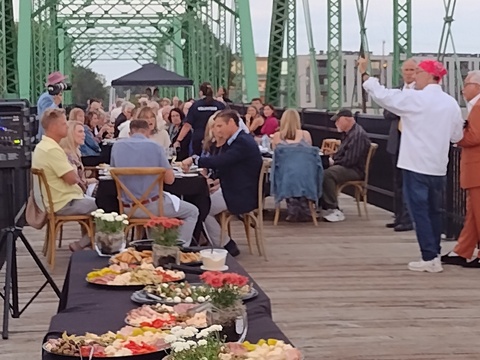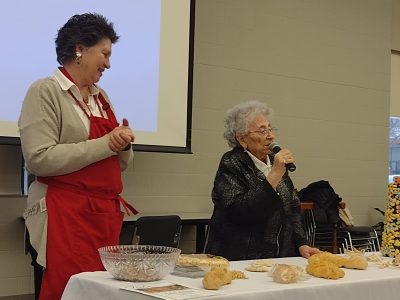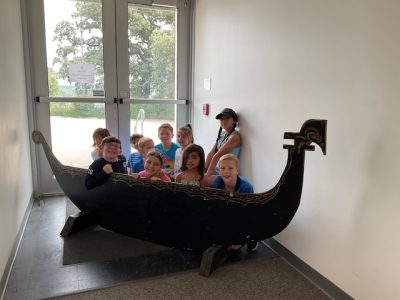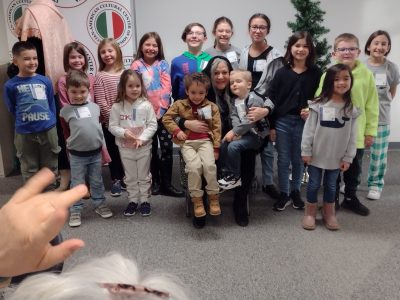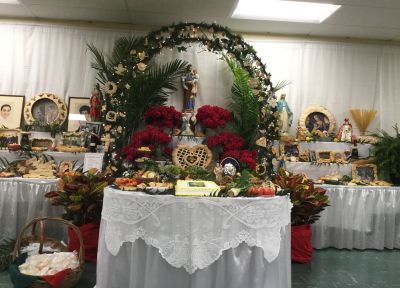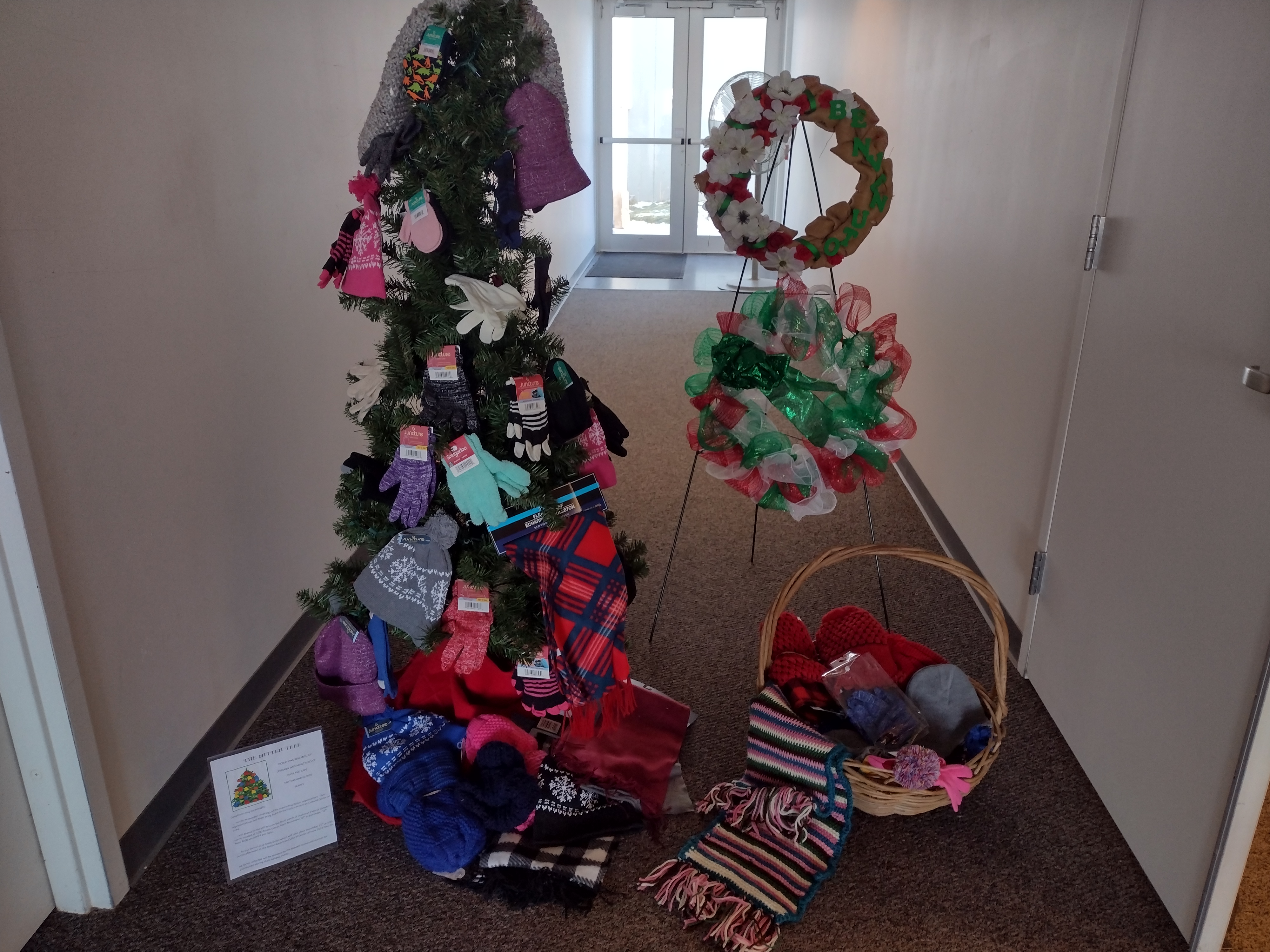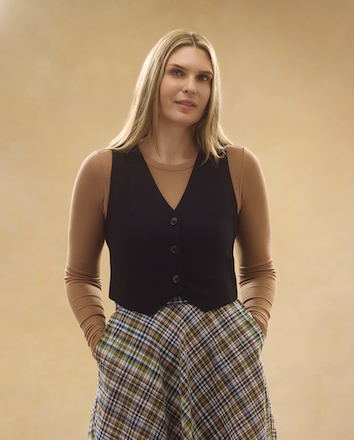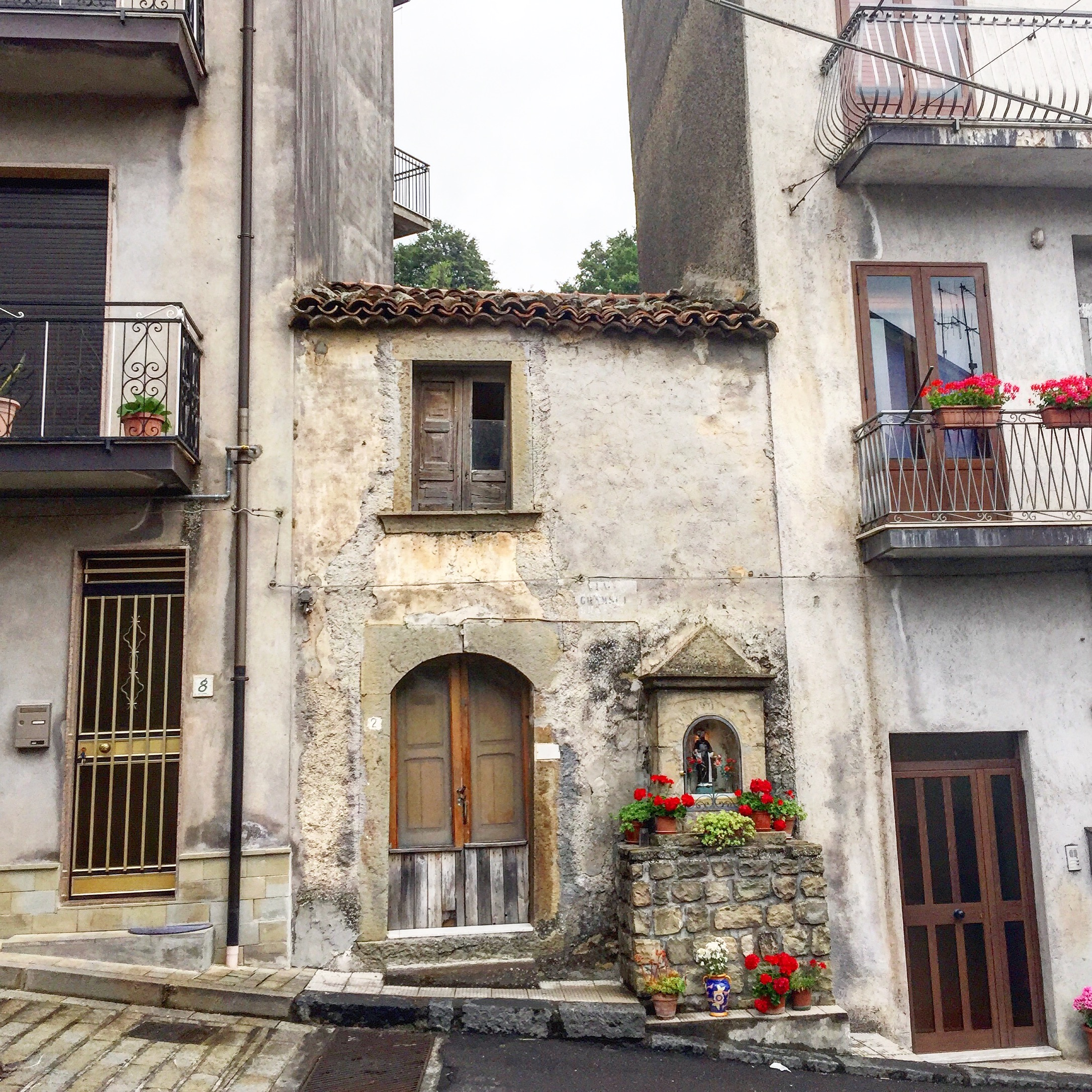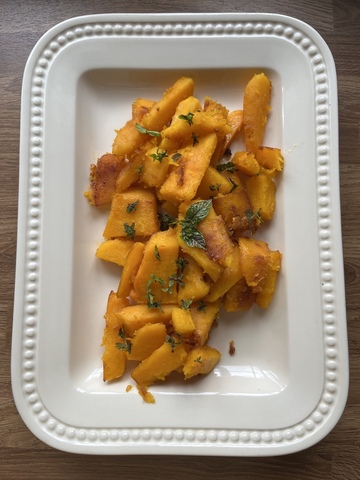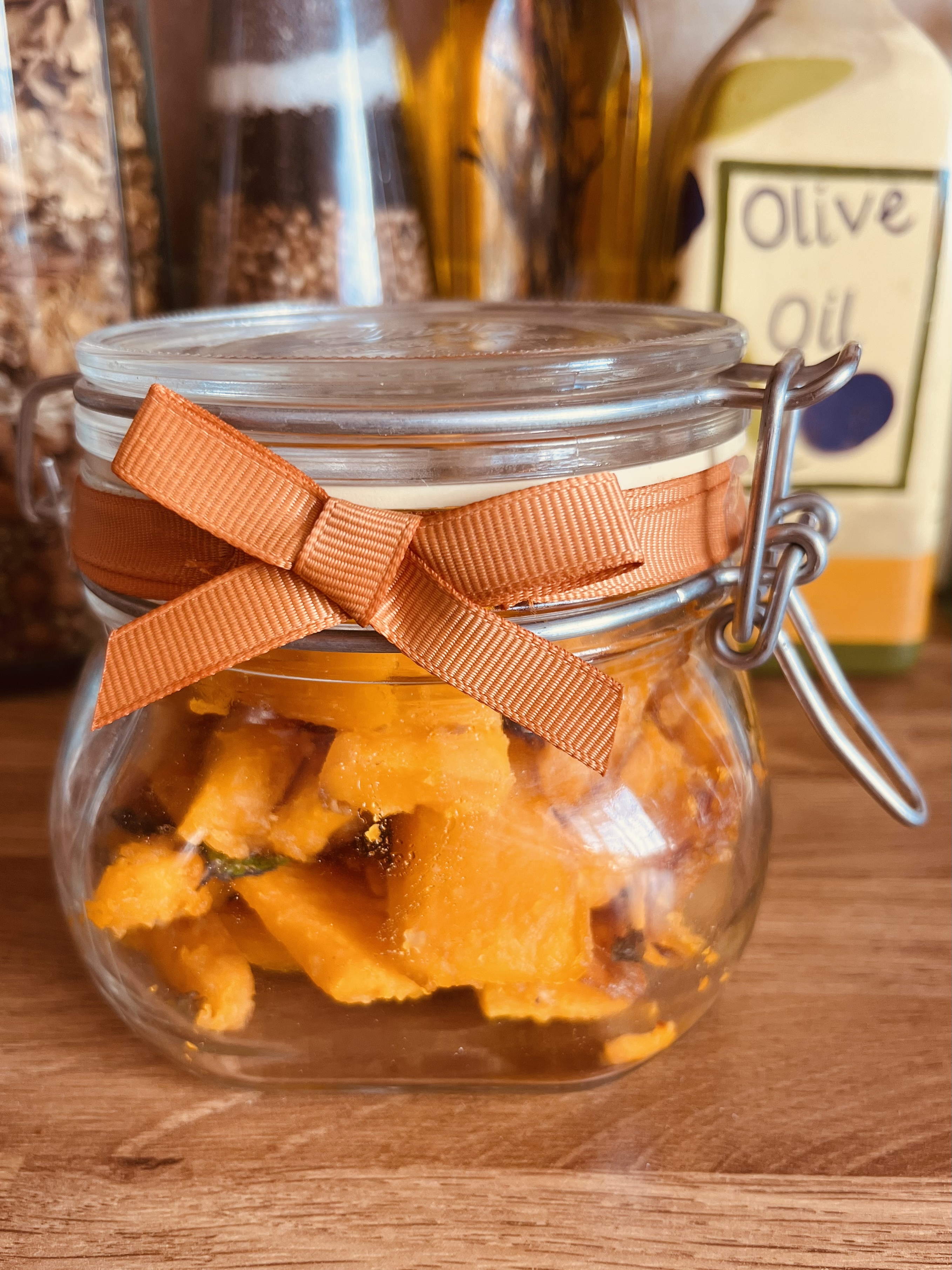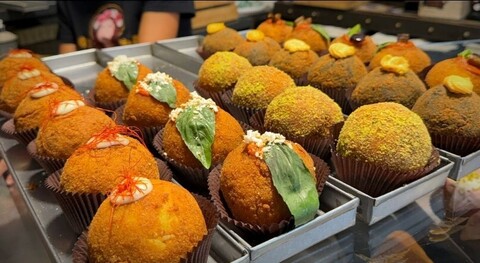How the Holy Cross Society Celebrates Sicilian Heritage Through Food, Music, and Community
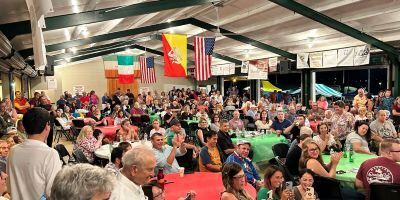
Boasting one of the most authentic Sicilian food festivals in the region of Pennsylvania’s Lehigh Valley and Western New Jersey, Holy Cross Society members are proud to pass on the traditions of their ancestors, who migrated from Santo Stefano di Camastra in the Province of Messina. The organization has evolved since its 1911 founding while staying true to its deep Sicilian roots. Each September, they host their annual Holy Cross Celebration & Sicilian Food Festival, which began as a reenactment of Santo Stefano di Camastra’s own La Festa del Letto Santo in which classic Sicilian foods are served, a queen is crowned, and music and fellowship are shared.
I spoke with Jim Palmeri, a member of Holy Cross Society’s Board of Trustees and webmaster of holycrosssociety.com, whose grandparents were founding members, about the organization’s history, how it promotes Sicilian heritage, the challenges it faces, and its goals as members embrace the future.
What is the history of the Holy Cross Society?
It started with my grandparents and that generation, who came from the same town in Sicily, Santo Stefano di Camastra. Like many organizations at that time, it was what we call today a mutual aid society, providing assistance with reading and writing English, immigration law, financial assistance, and job placement.
We are into the third and fourth generations of people from that same town in Easton, Pennsylvania, with about 65 families still with connections to the homeland.


2011 Queen Gina Palmeri holds court between former Auxiliary President Sandy Callery and former President Tony Tumminello.
How does the society continue to promote Sicilian heritage in the community?
We have a meeting once a month. There’s a Men’s Society and a Ladies Auxiliary. Every September, we hold a festival at the same time as one held in our town in Sicily at the church called Letto Santo. About 114 years ago, our grandparents reenacted the same celebration here as their relatives did in Sicily. We focus much of our work around that festival because it’s a bit of a homecoming time.
So families come back to town. Usually, there are two days of festival time, Friday and Saturday. Then, on Sunday, we have a Mass of the Holy Cross at our local Catholic church, where we all process in. The priest talks about the Holy Cross. (It’s the Feast of the Holy Cross on the second Sunday of September.)
We also crown the queen. Usually, she’s the granddaughter or daughter of one of our members. And she has a court. She has to write an essay about why she should be part of the celebration. We’re promoting our Sicilian heritage to the next generation.
Much of the learning is stories we tell about our parents or grandparents; many of us travel back and forth to our Sicilian town and still have cousins there. So we talk with them about what they’re doing and what’s going on in that town, and share what’s happening in this town.
Every year, one of our members, Sal Panto, who is also the mayor of Easton, does a trip there and invites people to go. He has opened it up to the public to get enough for a group, but there are always several members of our society. It’s really kind of a cultural exchange and immersion.
Those trips started on the hundredth anniversary of the Holy Cross Society when we did a bit of a pilgrimage. Maybe 30 of us went to Santo Stefano and spent almost a week connecting with our relatives. It was a really good way to reinvigorate the relationships. Then, a group from Santo Stefano came to Easton to celebrate our hundredth. We went over in the summer, and they came over in September.
Tell us about your members.
Right now, we’ll get 35 to 40 members to attend a monthly meeting of the 80 members, which is pretty good. Our charter is closed. You must be a relative of someone from Santo Stefano or married to someone from Santo Stefano.
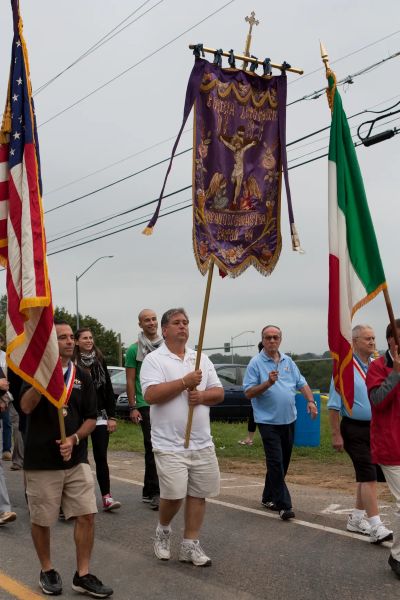

Holy Cross Society members march together in procession.
What are the highlights of your annual celebration?
Years and years ago, the organization used to actually march through the streets of Easton, and people would come out and donate money, and they would go from house to house when many of the Italian people lived in the inner city. Now, with suburbia, that doesn’t happen so much anymore. So we still do a procession, but we do it around our chapel grounds just outside of the city instead of through the city streets. It’s kind of a neat thing.
The Lehigh Valley Italian American Band comes back every year on Saturday night, and they play. There was a song called “#9” that was composed by the leader of what was the predecessor of the Italian American band led by a guy named Charlie Perello. That song has persevered so much that we still play it today at our festival. When it goes on, people start to clap and sort of sway along with the song, and they know it. It’s almost like the Notre Dame fight song; it’s recognizable. But that’s part of the tradition of the festival. It’s part of connecting our roots.
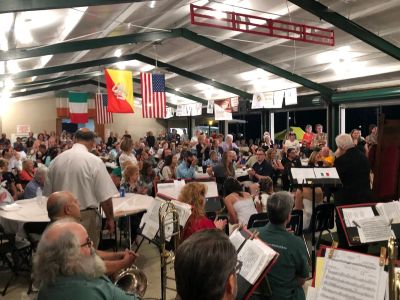

Lehigh Valley Italian American Band performs for Holy Cross Celebration attendees.
How are you reaching the next generation?
Every organization—whether it be our organization, Rotary, or Kiwanis clubs—is wondering what will happen with the next generation. And we have been extremely fortunate. Our children, who are now in their thirties, forties, and fifties, are getting involved. Their kids are now in the queen’s court and learning about their heritage.
We give out higher educational grants to children who are from our lineage. And if we have money left over from that fund, we then extend it to students who are attending Catholic schools.
One of our members, our former president, Nick Alfero, is very big on making certain that it’s fun for the kids to be there, so they understand that it is not just a carnival. That’s part of their heritage. And we serve all kinds of Sicilian food. We still have the tripe; we still serve the octopus salad.
In addition, we have Christmas parties for the kids now. We’ll do an Easter egg hunt, and for the first time, we’re going to have a picnic just for the families. During the celebration, we’re all working. So it’s part of a homecoming, and we interact with people from the public, but now we’re going to have a picnic just for us.
What do you hope to share with your members and community?
I think we share with the members that people came here as immigrants for a better life, hoping that most of them are living a better life (which I believe those who belong really kind of do), and reminding them of the hardships that their grandparents experienced to come to America and why they came to America.
My grandparents came over pre-World War I. And Sicily wasn’t a great place to live then. My cousin, Pippo Torcivia, lives in Santo Stefano. He’s a very successful ceramic artist. The town is known for its ceramics. So if you go there, there’s a bunch of ceramic factories.
Pippo and I are second cousins because his mother, my grandmother, and their brother, Uncle Santo, were siblings. Our great uncle and my grandmother came to America. Pippo’s grandmother was left in Sicily because she was married. The other two were still single when they came here.
One night, when we were talking, Pippo told me that my Uncle Santo would come back to Sicily. He was a bachelor. He worked on the railroads. So, he did well for himself. And he didn’t have a family. He would go back and forth and buy people shoes. He would give his sister money to live on.
As Pippo is telling me this story, he’s crying. He pulled me aside and very seriously said, “Can I ask you where Uncle Santo was buried?” I said, “Yeah, I know what the cemetery is.”
He says, “Would you take me there?” And I said, “Sure.” And on the way, he turned to me and said, “Can we buy flowers somewhere?” So, I took him to a greenhouse that was not far from the cemetery.
I took him to the cemetery and showed him the grave. He went with these flowers, sat there, and sobbed like a baby.
To me, that brought it all together, how we’re two cultures that are really bound. So you have to tell those stories to the kids about where they came from. And we have some pretty darn good young adults who are coming in and joining the organization.
If you enjoyed this article, consider subscribing to my newsletter for more content and updates!
